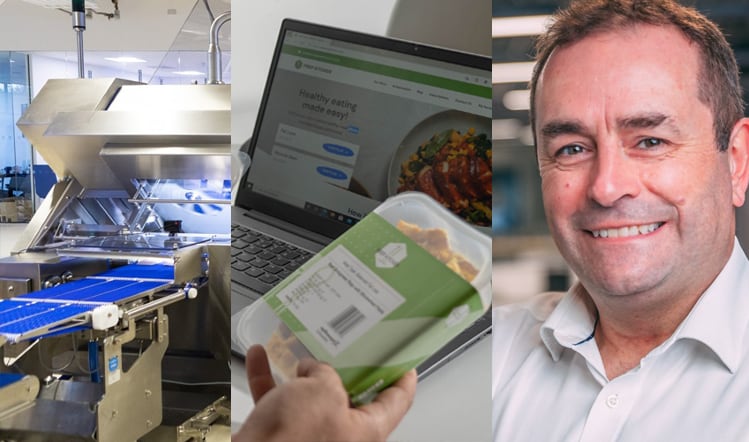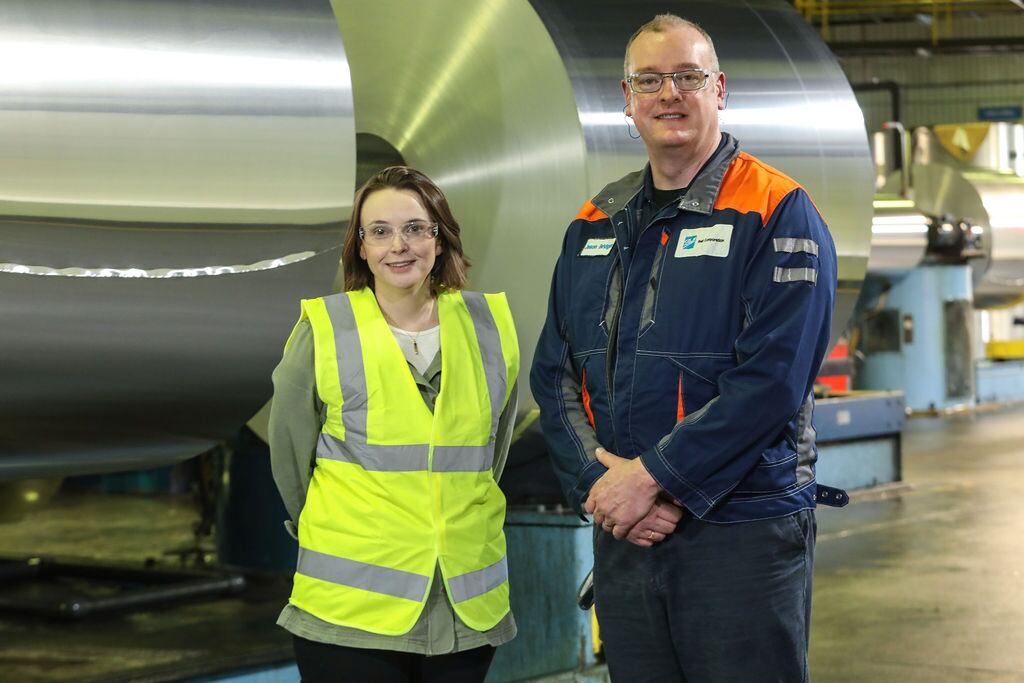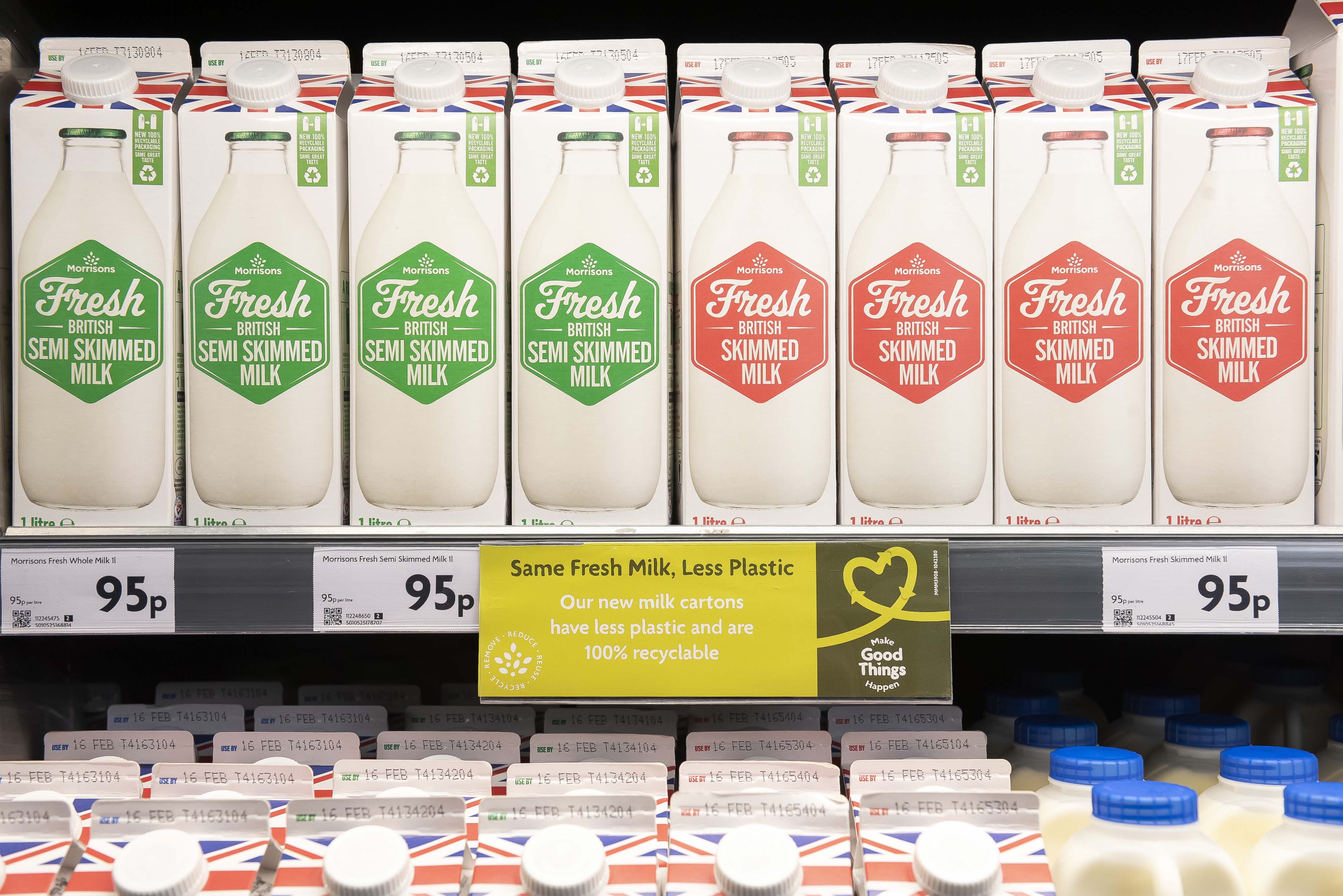New developments from Multivac prioritise complete line solutions that aim to reduce labour, increase efficiency and maximise output. Gone are the days of adding a new piece of kit to an existing line, the name of the game is providing an all-in-one system that does away with the need for separate training – or potentially a new member of staff to look after a piece of machinery.
Multivac’s full slicing and packaging line included the high-speed S1600 slicer, complete with an R245 thermoforming packaging machine, I410 inspection system and the brand-new SRP case packer. The line showcased its versatility by running a range of products from plant-based, cheese and ham.
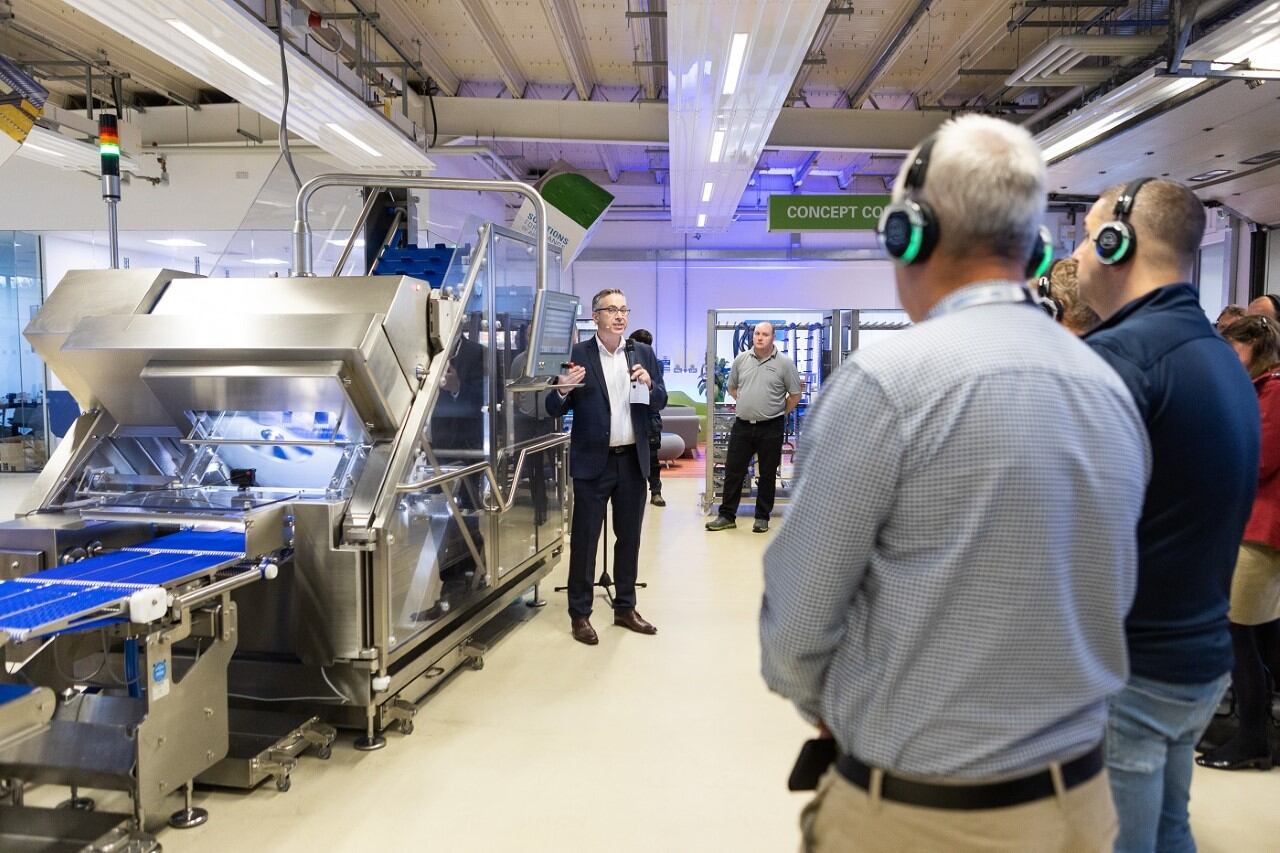
This isn’t to say manufacturers need to throw out their existing systems in order to replace them with one of these all-in-one solutions. Be it cost pressures or the inability to halt production to accommodate a new installation, sometimes there is no other option but to integrate a new piece of kit into the existing line.
But as with all parts of the food and drink manufacturing industry, space comes at a premium and packaging machinery manufacturers have taken this into account. Compact systems have become more and more prevalent as the years go by, with Multivac also offering a minimised footprint with its R085 and R105 thermoformers – plus the T 300 traysealer.
New way to label
Other developments in food packaging technology have been influenced by the need to eliminate downtime in the labelling process.
Online ready meals producer Prep Kitchen experienced constant downtime as a direct result from the shortfalls of the previous banding labelling system. Issues relating to slow label application and blockages in the machine were frequent, due to the strap bands creasing up travelling through the machine.
In a bid to tackle this issue, the manufacturer partnered with Ravenwood to introduce an alternative labelling and packaging process and opted to apply the supplier’s linerless labelling technology.
Ravenwood supplied a Nobac 5000 linerless applicator, capable of applying linerless labels at a rate of 150ppm. The fully automated sleever has also been fitted with Thermal Transfer Coders for printing variable data. Coveris UK, an approved Ravenwood printer, prints Prep Kitchen’s labels. The Nobac 5000 is also a great alternative for replacing cardboard sleeve packaging, which is often used in the ready meal market.
Morley said: “We can now confidently supply our quality products in sturdy ready meal trays, along with faultless linerless labels – all in a timely and efficient manner.”
Ravenwood’s linerless labels do not feature backing paper which results in zero liner to landfill. Disposing of liner to landfill is both costly to the company and the environment. Label liner, when landfilled, contributes to CO2. Many food manufacturers, packers and retailers are now switching to linerless in a bid for carbon neutrality.
Case study: ATS launches new jar lidding range
ATS Packaging Machinery has extended its capping solutions for the food and drink sector with the introduction of a range of jar lidding machines.
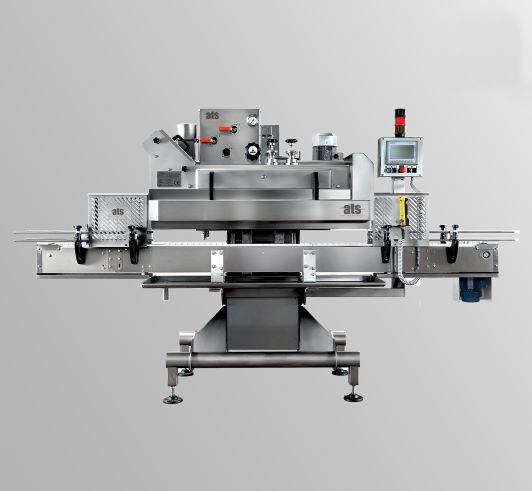
The new FBL-150, 350 and 500 models provide the fast and efficient automatic placement and tightening of metal Twist-Off (TO) and Press-on, Twist-Off (PT) closures onto glass jars and bottles with a vacuum seal. They are suitable for a wide variety of products, including mayonnaise, tomato ketchup, cooking sauces, pickled vegetables, jams and honey.
The choice of machines offers the flexibility to handle containers with neck sizes from 27mm to 110mm at speeds of up to 500 jars per minute. They can also be supplied with an accompanying vertical caps sorter-feeder for an all-in-one feeding and lidding solution.
FBL’s Lucio Cavazzoli said: “ATS’s excellent knowledge of the food industry and the company’s complementary ranges of equipment make them the ideal partner to provide the best sales advice and after sales service and support for UK customers.”
The pursuit of carbon neutrality also informs the type of packaging being produced for food and drink manufacturers.

Ian Smith, sales director at PFF Group said the biggest change the business has seen recently was the need to reduce plastic weight, with technology and machinery that will enable better control of material consumption and resource helping to facilitate this change.
“We look at thin wall injection moulding technology that's moved quite aggressively in terms of light-weighting,” he added. “So, we have recently installed some new equipment that is capable of producing very much lighter weight componentry – the tooling is a significant part of that as well.
“In-mould labelling, the robot technology, the controls, the speeds with which they operate all enhance the overall output and productivity. I think the drive will be along continued improvements in efficiencies in terms of electric consumption – just look at the way electricity prices have moved recently to know how important that is, but also anything that can reduce plastic weight.”
Environmental impact
Environmental issues were a huge concern for packaging firms, with companies under increased pressure from Governments and consumers to offer products that boast greater sustainability credentials.
Advanced Dynamics’ sales executive Vanessa Lewis said: “With the world’s environmental issues in mind and the recent Climate Change Conference, I think the consumer will continue to put pressure on manufacturing companies to look at ways to reduce packaging waste.
“I think refillable/reusable products and more sustainable packaging will be seen more and more. I have noticed an increase in enquiries for pouch filling and labelling. I also think more metal and glass containers will be seen on the shelves – the type of packaging solutions that look good that we can refill.”
Machinery investment
Outside of lead times for new machinery, globe-shaking events have made businesses more cautious when it comes to investment, especially when it comes to expensive new machinery.
As Tom Smith, managing director at packaging machinery developer Advanced Dynamics, explained it: “Let’s face it, we’re still unsure of what is going to happen next month, never mind next year – particularly when it comes to COVID-19. The emergency COVID-19 legislation is still in place until the end of March 2022 and, for that reason businesses are still cautious and operating under a Sword of Damocles, where the knife could drop at any point.
“There will be certain businesses – particularly those that were badly burned by the initial impact of the pandemic – that will be continuing to look over their shoulder during the interim, as experiences like that change the way business owners think and act. I expect that caution will most likely stick around until, at least, the second half of 2022.”
For those businesses still looking to invest in new packaging machinery, the option is there to apply for a tax super-deduction for plant and machinery – a company can claim back up to 25p for every pound you invest in ‘qualifying’ machinery and equipment for two years from 1 April 2021.
However, Ian Smith said the tax deduction had not played a part in any of PFF’s strategies and had not been mentioned in any of its discussions as to what it invested in. “I think our belief is that obviously we will take advantage of any tax breaks or incentives that we can, but we shouldn't let that lead our business strategy going forward,” he explained. “We are as a business looking to innovate rather than to continue supplying in what is a challenging marketplace for all the reasons we've just discussed.
“We make sure that this machinery is capable of producing products which are of value in the modern world, making sure that we are able to supply the changing marketplace quickly in an agile fashion – we'd be silly looking just for what tax advantages we get. I think hopefully we can make use of them, but the business strategy is led by the core pillars of sort of innovation, sustainability and creativity.”
Plastic packaging tax
Instead, one of the key drivers of innovation and investment within the business has been the plastic packaging tax looming on the horizon. With manufacturers facing down a hefty £200 per tonne tax on plastic packaging from April 2022, all hands have been on deck developing systems that can reduce the amount of plastic needed in food and drink packaging.
PFF’s recent £3m investment in machinery has been for that purpose, while making their product is efficient – both from a labour and energy the point of view – and making sure that the resources that are being employed are used as efficiently and wisely as possible.
“It's about all of the circumstances that we're facing with regard to the tail end of the pandemic, energy costs and now the added catalyst of war in Europe,” Smith concluded. “All of those will just help to focus people's attention on those kinds of key criteria being what the market needs and therefore how they will spend their money and time and research.”
“What happens next? We've seen volatility in our raw material costs. If you track the polymer indexes, they're now double where they were twelve months ago, which is a frightening statistic when you consider it something like 50% of our 55% of our selling price. So that has a massive impact on the cost of goods going into our customers and also coming into us.”
“How can industry defend that? It's difficult to really say – the lead times for some of the new technologies is measured in months and years rather than weeks and months, which is the speed at which things are changing in the environment at the moment.”
Packaging trends in 2022
Advanced Dynamics observed eight prevalent packaging machinery trends for 2022
1. Businesses will continue to be cautious with their investment
2. Big packaging businesses will take more of their operations in-house
3. Tech developments and the revolution of the customer and engineer experience
4. A new wave of apprenticeship schemes
5. Freight will still be really, really expensive
6. We will need to get to grips with the UKCA marking
7. Wider discussions on reducing plastic packaging and plastic waste
8. A Boom of new small packaging businesses


